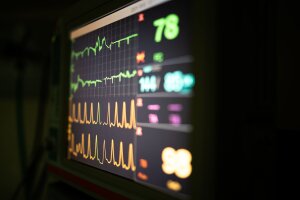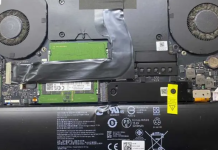For most adults, the heart beats 60 to 100 times per minute. When someone’s heart beats more than 100 times per minute, they have a condition called tachycardia. During certain specific experiences, it’s normal for your heart rate to go above 100. This may happen during exercise or when something scares you, and it’s called sinus tachycardia.
Sometimes, your heart beats faster than 100 beats per minute due to a problem in the heart,or an underlying health problem such as diabetes or thyroid disease. Other times, doctors aren’t entirely sure why a person’s heart rate is higher.
Some types of tachycardia cause episodes during which the heart rate goes irregularly high – someone’s heart rate refers to how often the heart beats per minute. Other types, such as inappropriate sinus tachycardia, are associated with a high resting heart rate. This means that even while sitting down, someone with this type of tachycardia may have a heart above 100.
Types of Tachycardia
There are different types of tachycardia. Here are some of the most common types:
- Atrial fibrillation, also called afib. This is used to describe an irregular and often fast heart rate. About 3 million to 6 million people in the U.S. have atrial fibrillation.
- Supraventricular tachycardia (SVT) or atrial tachycardia. Your heart has two upper chambers and two lower chambers. With SVT or atrial tachycardia, a fast heart rate is caused by abnormal firing of the electrical signals in the heart’s upper chambers.
- Ventricular tachycardia. This type of tachycardia is caused by an abnormal firing of the electrical signals in the heart’s lower chambers. Ventricular tachycardia can be life-threatening, especially if you have other previous heart damage. That’s because ventricular tachycardia may not allow enough blood to pump throughout your body.
- Inappropriate sinus tachycardia. This type of tachycardia causes a person to have a higher-than-normal heart rate without a clear cause. “I often explain to patients that the brain and the body tell the heart how fast to beat. With inappropriate sinus tachycardia, that set point is off for whatever reason,” says Dr. Sandeep Jain, a cardiologist and professor of medicine at the University of Pittsburgh School of Medicine.
The Dangers of Living With Tachycardia
How serious someone’s case of tachycardia is may vary depending on the cause, how fast the heart races and whether the patient has underlying heart disease, says Dr. Kenneth Ellenbogen, director of electrophysiology and pacing for the Virginia Commonwealth University School of Medicine in Richmond and an American Heart Association volunteer medical expert.
Ventricular tachycardia is considered more serious and must be addressed. Having afib increases your risk for stroke because your irregular heartbeat can allow blood to collect in the heart and potentially form a blood clot that can travel to your brain. This makes it another type of tachycardia that requires monitoring.
Inappropriate sinus tachycardia isn’t life threatening and doesn’t appear to weaken the heart muscle, Jain says. Still, if a person has it and their heart rate shoots up extremely high, it may require medical attention.
Treatments for Tachycardia
Treatments for tachycardia, depending on the type you have, include:
- Medications such as beta blockers and calcium channel blockers.
- A procedure called an ablation, which destroys the cells causing the tachycardia. Doctors may try ablation if medications have not helped enough.
- A pacemaker, which is a type of device inserted under the skin that uses electrical pulses to help correct an abnormal heartbeat.
- An implantable cardioverter-defibrillator, which is a small device that detects your heart rhythm and sends electrical shocks to help correct it. This is used when you have life-threatening tachycardia.
Treatment can help cure certain forms of tachycardia, such as ablation that fixes an abnormal electrical circuit in the heart.This can include atrial fibrillation, SVT and ventricular tachycardia.
Other treatments like medications may not cure tachycardia but can lessen the burden of it, says Dr. Nikhil Warrier, a cardiac electrophysiologist and medical director of electrophysiology at MemorialCare Heart & Vascular Institute at Orange Coast Medical Center in Fountain Valley, California.
In addition to treatment, there are certain lifestyle changes that can help keep your heart rate under control when you have tachycardia.
9 Lifestyle Tips for Tachycardia
- Avoid certain food triggers.
- Keep a healthy body weight.
- Exercise, but find out if you should monitor your heart rate.
- Check with your doctor before taking any new medications.
- Work with your doctor to rule out underlying causes of a faster heart rate.
- Avoid extreme heat, and stay hydrated.
- Watch your stress level.
- Track your heart rate trends.
- Know when to see your doctor again.
Anything that’s considered a stimulant can potentially increase your heart rate. Two big triggers for tachycardia are caffeine and alcohol. In fact, alcohol can raise the risk for afib and make existing cases of afib worse.
Other potential food triggers for tachycardia include:
- Salt.
- Spicy foods.
- Sugar.
- The chemical MSG, used in some Chinese food.
You should listen to your body to track what triggers are strongest for you, Jain recommends. Each person’s diet-related triggers may slightly vary.
Studies show that weight loss in overweight patients with atrial fibrillation can help to keep their heart rate lower, Ellenbogen says.
For instance, a 2015 study presented at the American College of Cardiology annual meeting that included 355 obese patients with afib found that losing 10% of their body weight made them six times more likely to no longer have afib or its symptoms.
You’ll want to check with your doctor or a registered dietitian on the best tips to help you lose weight. However, a heart-healthy diet that’s rich in fruits, vegetables and whole grains is always good for the body, Warrier says.
If you have tachycardia but you’re otherwise healthy, your doctor will most likely recommend that you exercise regularly. “Any form of exercise will work as long as you aim for 150 minutes a week,” says Dr. Leonard Pianko, a cardiologist and founder of Aventura Cardiovascular Center in Aventura, Florida. The goal of moderate physical activity 150 minutes a week can break down to 30 minutes daily, five days a week.
Some exercise possibilities to keep in mind include:
- Cycling.
- Dancing.
- Walking.
- Swimming.
Check first with your doctor to see if you should keep your heart rate below a certain level. Some providers may follow a pre-established formula to determine your heart rate limit when exercising. The American Heart Association has a resource that addresses target heart rates, but again, always ask your doctor what’s right for you.
Certain medications can raise your heart rate and may be better to avoid. These can include:
- Cold medicines like decongestants (for example, pseudoephedrine and phenylephrine).
- Albuterol, used often in inhalers to treat asthma.
- Certain antidepressants, including selective serotonin and norepinephrine reuptake inhibitors.
If you use medication for your tachycardia, it’s also possible for certain drugs to have an interaction with the medications you currently take. That could lead to unwanted side effects.
If you know you have tachycardia, then your doctor probably already did some tests to rule out health conditions that sometimes cause a faster heart rate. These can include:
- Anemia.
- Diabetes.
- Sleep apnea.
- Thyroid disease.
These conditions can raise your heart rate for different reasons. For instance, your heart must work harder when your body has excess thyroid hormone, and one common result is a faster heart rate. Anemia, which is a low iron level, forces the heart to work harder to make up for decreased oxygen in the blood.
Continue to monitor your overall health and let your doctor know of any new unusual symptoms that may require further testing, just in case they’re associated with your faster heart rate.
Heat can lead to a higher heart rate in some people. More specifically, the dehydration that often happens when you’re out in the heat puts extra stress on the body. That’s what can make your heart rate shoot up. If you live in a hot environment, do your outdoors exercise first thing in the morning or in the evening, Pianko advises.
Stay well hydrated, and replenish electrolytes that your body uses after exercise or extreme heat. Sports drinks and coconut water can help replace electrolytes.
Excess stress and anxiety can cause your heart rate to speed up. Try to identify what’s causing your stress. Use some common-sense tips to help you cope with stress, such as:
- Breathing techniques.
- Doing yoga or meditation.
- Listening to calming music.
If you still have trouble managing stress, consider seeking further help from a mental health professional.
Knowing what your heart rate is throughout the day and during certain activities can be empowering. If you want to know your heart rate specifics, consider buying a fitness smart watch that will track your heart rate.
The watch will also track your heart rate data over time so you can share those numbers with your doctor. If you go to a gym, you can also monitor your heart rate on most exercise machines.
Once you have diagnosed tachycardia, you may plan to return to your primary doctor or a cardiologist every few months for monitoring. It’s also helpful to know when you should see your doctor sooner rather than later, Jain says. Plan to set a doctor’s appointment if:
- You’re having more frequent tachycardia episodes. An episode may last a few seconds, a few minutes or longer, but it’s a time period where your heart races more tha normal. For instance, a person with SVT may have a heart rate of 150 to 220 beats per minute during an episode. You may also feel chest pain, dizziness and is if you are going to faint.
- Tachycardia gets in the way of you doing the things you want to do.
- The condition is affecting you emotionally.
- You have to visit the ER for your tachycardia episodes.




